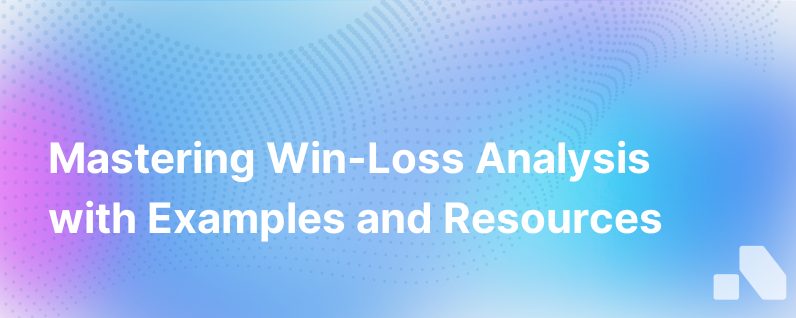
To thrive in the competitive world of business, it's critical to deeply understand your market - the competitive landscape, what customers want, and why they choose your solutions (or not). That means going beyond mere guesses and tackling it with a systematic approach. Win/loss analysis is one such strategy that, when done right, can yield priceless insights. In this post, we dive deep into the mechanics of win/loss analysis and how it can drive your sales to untapped levels.
What Is Win/Loss Analysis?
Simply put, win/loss analysis is examining your deals - both won and lost - to uncover valuable insights about your customers, competitors, and your own team's performance. It's about asking the right questions from the right people at the right time. This is a powerful tactic for strengthening your product-market fit, refining your pricing, improving your sales tactics, identifying market trends, and much more.
Why Win/Loss Analysis is Important
Effective win/loss analysis can take your sales performance to new heights by understanding:
- How customers perceive and categorize your product/service
- How you stack up against your competitors
- What factors are driving purchase decisions
- Unmet needs or opportunities in the market
- Effectiveness of your sales process and strategies
Steps to Conduct an Effective Win/Loss Analysis
Win/loss analysis need not be chaotic or draining. Here's a step-by-step structure you can follow to streamline this process and yield actionable insights.
- Identify the Deals: Begin by selecting the completed deals - won and lost. These could be big-ticket sales, deals that just slipped away, or a mix of both.
- Plan the Interview: This is the core of win/loss analysis. Plan an unbiased, balanced phone or video interview with decision-makers or influencers involved in the deal. Make sure the questions are open-ended, non-threatening and unbiased.
- Conduct the Interview: Carry out the interview with empathy and openness. Ensure it's done within 3 months of deal closure to ensure the memory is fresh.
- Analyze and Report: Make sure you have an organized system to aggregate, anonymize, and analyze the data. The aim is to spot patterns, not dwell on singular occurrences. Translate these patterns into actionable insights and illustrate them through reports, infographics, or presentations.
- Share and Act: This step is crucial. The insights gleaned need to be shared across teams and used to improve processes, tweak messaging, refine pricing, update sales tactics, or even innovate your product.
Win/Loss Analysis Examples
Let's assume you're a fintech startup offering simplified accounting solutions to SMEs. Here are examples of what you may discover from a win/loss analysis:
- Won Deal: An e-commerce retailer chose your solution, stating the intuitive UI/UX and the agility of your customer support team as the reasons. You may be underestimating how impactful these aspects can be. This is an invitation to further refine your user interface and double down on your customer support.
- Lost Deal: A tech startup went with a competitor. Even though they loved your platform, they felt the pricing was too steep for their budget. This could indicate the need for a more flexible pricing structure tailored for various budgets.
Resources for Streamlining Win/Loss Analysis
Even though win/loss analysis seems straightforward, each step has its complexities. Fortunately, several resources can aid and accelerate this process.
- Win/Loss Analysis Books: Books like "Win/Loss Reviews: A New Knowledge Model for Competitive Intelligence" by Rick Marcet offer a comprehensive guide for this process.
- Win/Loss Analysis Software: Software solutions like Gong and Chorus can help record, transcribe, analyze, and glean insights from sales calls and meetings.
- Third-Party Consulting Firms: Companies like Pragmatic Institute and Clozd offer specialized services for unbiased, thorough win/loss analysis.
- AI Platforms like Aomni: Not only does Aomni gather real-time account research & sales content, but it's also an invaluable tool for win/loss analysis. By analyzing sales data, Aomni can reveal patterns and insights about why deals were won or lost, bringing a crucial competitive edge.
Conclusion
Win/Loss analysis is a profound strategy that uncovers crucial insights directly from your sales process. It's an important exercise for understanding your customers, competitors, and how well your product or service aligns with the market. Importantly, it's not a one-off exercise; it should be an ongoing practice. The insights gleaned will empower more informed decision-making and provide a strong foundation for future success.